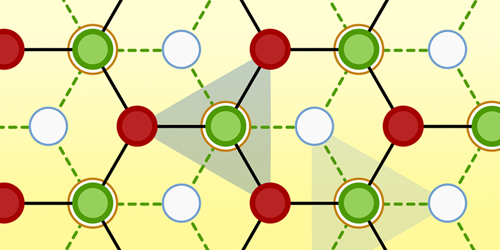Predicting Ferroelectricity with Group Theory
A ferroelectric crystal snaps between two opposite and stable polarizations in response to an electric field. The states’ robustness and the fact that voltage—rather than a more unwieldy magnetic field—performs the switching make ferroelectrics attractive for nonvolatile memory and other applications. In principle, crystalline monolayers are ideal ferroelectrics. Their thinness reduces both the requisite switching field strength and the volume that the material occupies in a device. But monolayers’ lack of a third dimension lessens their opportunity to exhibit a crucial property of ferroelectric materials: a structural asymmetry along the out-of-plane axis. Now Changsong Xu and Hongjun Xiang of Fudan University in China and their collaborators have developed a model that predicts how this necessary asymmetry can be engineered by stacking two monolayers with misalignments between their crystal structures [1].
Classifying 3D crystal structures by their symmetries dates back to the 1830s. In the case of 2D monolayers, the possible structures occupy 80 mathematically defined groups. The stacking and shifting of monolayers to form bilayers creates and destroys symmetries. Recently, researchers proposed that the symmetry reduction obtained by placing one monolayer on top of another of the same material and shifting it would create a bilayer with ferroelectric properties. Xu, Xiang, and their colleagues show that all the possible types of monolayers and all the possible types of stacking (rotations and shifts) can be analyzed within a single group theory framework. By applying the techniques of group theory, they can identify which structures and which stackings yield ferroelectricity. The team’s predictions match the modest number of stacked bilayer ferroelectrics created in the lab so far, while their general theory portends the discovery of many more.
–Charles Day
Charles Day is a Senior Editor for Physics Magazine.
References
- J. Ji et al., “General theory for bilayer stacking ferroelectricity,” Phys. Rev. Lett. 130, 146801 (2023).




